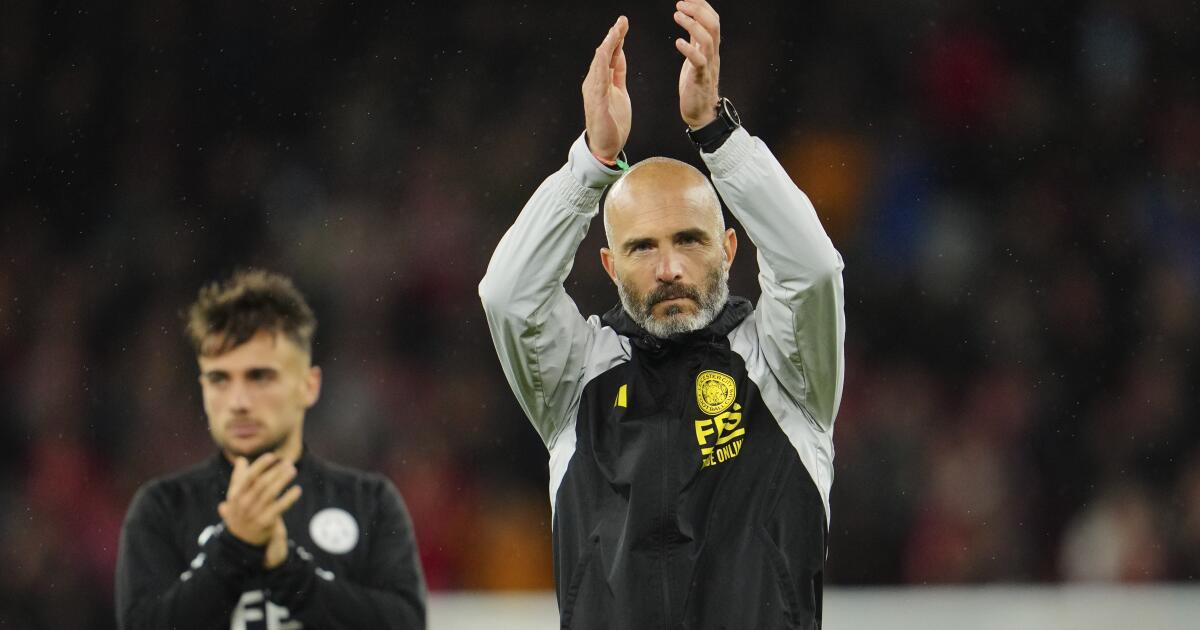The Premier League rarely stands still.
For the 2024-25 season that starts Friday, there are five newly hired coaches, around $1.6 billion in new players (and counting), new offside technology, updated financial regulations and a modified match schedule.
CHANGES IN THE COACH
A quarter of the managers will be taking charge of a Premier League game for the first time, with Liverpool (Arne Slot), Chelsea (Enzo Maresca) and Brighton (Fabian Hurzeler) and both Southampton (Russell Martin) and Ipswich (Kieran McKenna) gaining promotion without managers possessing top-flight experience. Add in Julen Lopetegui being the new man at West Ham after four-and-a-half years of David Moyes in charge and Steve Cooper replacing Maresca at Leicester, and the dugouts will look different this season. The focus will be on Slot and the style he seeks to implement at Liverpool after the team’s nearly nine years under the popular Jurgen Klopp, now favouring a possession-based game.
SLOW MARKET
The 20 Premier League clubs have spent as much on new players this transfer window as those in Spain, Italy and Germany combined, according to transfermarkt.com. So why does it feel like such a slow summer of deal-making? Perhaps because there have been no blockbuster deals, with the most expensive being striker Dominic Solanke, who moved to Tottenham from Bournemouth for £65m ($83m). However, plenty of deals worth between $30m and $70m are quickly piling up, and there are still three weeks left in the window, during which Manchester City, Manchester United, Liverpool, Arsenal and Chelsea are all expected to step in. City (Savinho) and Arsenal (Riccardo Calafiori) have made just one new signing so far and Liverpool have made none. It would be no surprise if by the end of the transfer deadline on August 30, Premier League clubs had spent well in excess of €2bn, even if most are enforcing the league’s strictest financial rules.
SEMI-AUTOMATIC OFFSIDE
Offside decisions are expected to be made much quicker in the Premier League this season. Semi-automatic offside technology is being introduced for the first time, with the new system set to be rolled out during the first half of the season. Multiple cameras will track a player’s movements and record the body position that is relevant to an offside decision. The data is processed by artificial intelligence to create a 3D offside line which alerts the VAR refereeing team. It is expected to take an average of around 30 seconds of the time to make the decision, which until now would be made manually by VAR officials. Semi-automatic offsides were used at the 2022 World Cup and the recent European Championship.
FINANCIAL RULES
Last season in the Premier League was notable for some clubs, such as Everton and Nottingham Forest, who received points deductions for breaching the competition’s profitability and sustainability rules, which are now being enforced more strictly. Next season is the final year of those regulations, with two new spending caps being trialled ahead of their introduction from the 2025-26 season. Clubs in England’s top flight will trial a “Squad Cost Rules” system, which will limit spending on players to 85% of a club’s football revenue and net profits or losses on player sales. A second system called “Cap-to-Fund Anchor” limits spending to a multiple of the lowest combined prize money and cash from TV rights a team is projected to earn. The league said the systems were aimed at “enhancing and preserving the financial sustainability of clubs and the competitive balance of the Premier League” as well as “promoting clubs’ aspirations”.
NO WINTER BREAKS
If the Premier League is known for being full-time, even more so this season. There is no winter break for clubs this time around, as the season starts later, to give players more time to recover from international tournaments this summer. Last year, for example, five games were held each weekend over a two-week period, giving teams at least one weekend off during January. All other major leagues in Europe will have a winter break.
